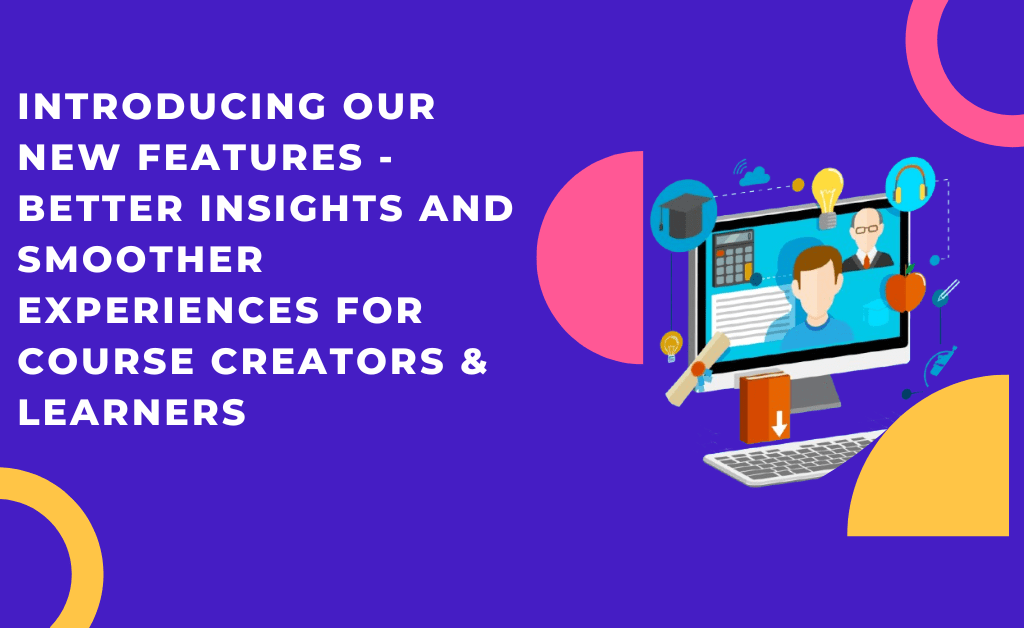The future of education is increasingly digital, and mini-online courses are the new frontier. These courses, typically spanning 1-3 hours, are a potent tool in providing targeted, impactful knowledge. If you’re considering developing your own, this comprehensive guide offers valuable insights.
- Choosing Your Mini Online Course Topic and Audience
- Structuring Your Mini Online Course: A Blueprint for Success
- Creating Engaging Content: More Than Just Information Delivery
- Best Platforms for Hosting and Delivering Mini Courses Online: Where Your Content Calls Home
- Promoting and Launching Your Mini Online Course: Turning Hype into Enrolments
- Tips for Designing Engaging Content: The Subtleties of Student Engagement
- Creating a Mini Online Course Outline and Interactive Elements: Laying the Foundation for Engagement
- Conclusion
Choosing Your Mini Online Course Topic and Audience

Before diving into content creation, it’s essential to identify gaps in existing educational material. Read through academic journals, sift through educational forums, and even check trending topics on social media platforms like LinkedIn or Twitter. These sources can be gold mines for recognizing what hasn’t been adequately covered or what can be explained better.
The Audience Analytics: Know Who You’re Teaching
Understanding your target audience’s needs is just as vital as knowing what subject matter to cover. As seasoned lecturers, you’re already skilled in tailoring your in-person courses to different learning styles and preferences. The same care needs to be taken when you move to an online platform. Are you aiming to help undergraduates, professionals upskilling, or perhaps post-graduates? Conduct preliminary surveys or leverage analytics tools to dig into your prospective students’ backgrounds, challenges, and learning preferences.
Crafting Persona Sketches: A Step Beyond Demographics
To go a step further in understanding your audience, consider developing persona sketches. These are detailed profiles of the typical students you aim to serve. Include demographic factors like age and educational background, but also delve into specific challenges or pain points they might face in your subject area. These persona sketches serve as a constant reference, helping you tailor your content and delivery style to engage your target learners most effectively.
Structuring Your Mini Online Course: A Blueprint for Success
When structuring your mini-online course, the first point of consideration should be its length. Aim for a course that spans between 1 to 3 hours of content. This timeframe strikes the right balance – long enough to dive into a subject comprehensively but short enough to retain student engagement and facilitate easier course creation on your part.
The Building Blocks: Organize into Modules
Breaking your mini-online course into smaller, more digestible chunks is crucial for student engagement and learning retention. Think of your course as a series of interconnected modules, each designed to achieve a specific learning outcome. Within these modules, apply the “microlearning” approach by dividing content into lessons that span 10-15 minutes.
Microlearning isn’t just a buzzword; it’s backed by cognitive science. Shorter lessons cater to the average human attention span and make it easier for your students to commit the information to long-term memory. It also gives learners the flexibility to go through the course at their own pace without feeling overwhelmed, making it a more manageable and less intimidating learning experience.
Seamless Flow: Ensure Logical Progression
After identifying your modules and their respective lessons, ensure that they follow a logical progression. Each module should build upon the last, leading your students smoothly from one topic to the next, fostering a cohesive learning journey.
By paying attention to course length, organizing your content into focused modules, and applying the principles of microlearning, you are well on your way to creating a mini-course that is as effective as it is engaging.
Creating Engaging Content: More Than Just Information Delivery
In the world of online education, your presentation isn’t just a ship for information; it’s an integral part of the learning experience. For this reason, investing in high-quality production elements can make a world of difference. A good microphone can bring clarity to your voice, eliminating distracting ambient noises. Proper lighting enhances video quality, and a green screen can provide a clean, unobtrusive background. These elements work together to create a professional setting that lends credibility to your course content and helps students focus.
The Power of Multimedia: Incorporating Videos, Infographics, and Interactive Simulations
Text and spoken words are fundamental, but the addition of multimedia elements can significantly enrich your course. Videos provide visual stimulation and can demonstrate processes or concepts in action. Infographics can condense complex data into an easily digestible format, and interactive simulations give students a hands-on learning experience from the comfort of their homes. These multimedia elements contribute to a multimodal learning environment that appeals to various learning styles, from visual and auditory to kinesthetic.
Grounding Theory in Reality: Discussing Real-World Applications
One of the most effective ways to make your course content engaging is to tie theoretical concepts to real-world applications. Connecting the course material to real-world examples not only helps students understand better but also shows how the information can be used in practice. Introduce case studies, share examples from current events, or offer hypothetical scenarios that encourage students to apply what they’ve learned. Such practices bring the academic into the realm of the applicable, making your course not just an informational resource but a toolkit for real-world challenges.
Ensuring that you have high-quality production, multimedia elements, and real-world applications, you’ll create an engaging, multidimensional educational experience that captivates your students.
Best Platforms for Hosting and Delivering Mini Courses Online: Where Your Content Calls Home
Selecting the right platform to host your mini-online course is not a trivial decision; it’s a pivotal one. The platform is not just a repository for your content, but a crucial part of the user experience that influences student engagement, content accessibility, and overall satisfaction. The wrong choice can inhibit your course’s potential, while the right one can amplify its impact.
The Two-Lane Road: Self-Hosted vs. Marketplaces
If you’re technically savvy and want full control over your course’s features and revenue, self-hosting might be your preferred route. This option lets you tailor every aspect of the student experience, but it comes with the responsibility of handling technical issues and marketing your course.
On the other hand, marketplaces like Udemy or Coursera can alleviate those burdens by offering a built-in audience and a well-oiled platform. However, these advantages come with trade-offs: less customization, less control over pricing, and higher commission fees taken from your sales.
Niche Winners: Tailored Solutions for Mini Online Courses
For creators specifically focusing on mini-online courses, specialized platforms offer an appealing middle ground. These platforms are built to provide streamlined user interfaces, simplified uploading processes, and even built-in marketing tools specifically suited for shorter courses. They offer a level of customization and control that lies somewhere between self-hosted options and larger marketplaces.
Choosing the right hosting platform requires a balance of factors, from technical control and customization to the ease of setup and marketing support. Make a choice that aligns with your needs, skills, and the kind of student experience you aim to offer.
Promoting and Launching Your Mini Online Course: Turning Hype into Enrolments

Even before your course goes live, it’s crucial to generate excitement and interest. Your existing academic network can be a valuable resource for this. Don’t shy away from using academic forums, LinkedIn groups, or departmental mailing lists to create some initial buzz. Social media can also serve as a potent tool for reaching a broader audience. Consider collaborating with educational institutions or industry influencers who can vouch for the quality of your course. Creating a pre-launch email list can offer a two-fold advantage: it gives you a ready audience to market to and allows you to gauge interest before you fully commit.
Crossing the Finish Line: Launch Strategies
The work doesn’t end once your course is live; in fact, that’s when the real promotional push begins. Content marketing through blogs, webinars, or even guest articles can continually draw attention to your course. Nothing speaks louder than success, so encourage early adopters to leave reviews and testimonials. Social proof can be a powerful motivator for potential students who are on the fence about enrolling. If budget allows paid advertising through social media or search engines can give your course that extra visibility boost.
By having a well-planned promotional strategy, both pre-launch and post-launch, you ensure not just the visibility but also the credibility and success of your mini course. It’s about creating a sustained momentum that not only gets students through the door but also keeps them engaged long after the initial launch.
Tips for Designing Engaging Content: The Subtleties of Student Engagement
While a mini online course’s shorter format offers the advantage of focus, it also runs the risk of cramming too much information into a short amount of time. This can result in cognitive overload, where students feel overwhelmed and struggling to understand what they are learning. Effective course design, therefore, requires a careful balance. Aim for clarity and depth over the sheer volume of information. Make every moment count, but don’t saturate it to the point where the student’s absorption and retention are compromised.
Two-Way Street: Feedback Mechanisms
Interactive elements like quizzes and assignments serve multiple purposes. On the surface, they are tools for evaluation, helping students identify their strengths and areas for improvement. However, they are also invaluable feedback mechanisms for you, the course creator. By analyzing quiz results or assignment submissions, you can gather insights into which sections of your course are well-received and which might need refinement. Moreover, providing opportunities for student feedback – whether through a dedicated course evaluation form or an informal request for comments – can offer fresh perspectives on how to improve the course further.
By being mindful of cognitive load and implementing two-way feedback mechanisms, you not only elevate the quality of your course but also increase its long-term effectiveness. You transform the course from a monologue of information to a dialogue of engaged, mutually beneficial learning.
Creating a Mini Online Course Outline and Interactive Elements: Laying the Foundation for Engagement

Before you hit the record button, a well-thought-out course outline is indispensable. Think of this as the architectural blueprint of your mini online course. It will guide you on the logical progression of topics, ensuring that each segment flows seamlessly into the next. An effective outline goes beyond just listing the topics; it includes learning objectives, resources, and even specific examples or case studies you intend to discuss. This not only helps you stay organized during production but also ensures that you cover all necessary aspects for a comprehensive learning experience.
Beyond Passive Learning: Interactive Quizzes and Assignments
A course isn’t just about imparting knowledge; it’s about facilitating an environment where students can apply what they’ve learned. This is where interactive elements like quizzes and assignments come into play. Tools like Quizlet offer a variety of quiz formats to test understanding, retention, and application of knowledge. Meanwhile, platforms like Google Classroom can help you effectively manage assignments, making it easier for both you and your students to keep track of deadlines and submissions.
Interactive elements serve multiple roles: they keep the student engaged, allow for self-assessment, and even offer you feedback on the course’s effectiveness. Don’t underestimate the power of interactivity; it can be the difference between a course that merely informs and one that truly engages.
By carefully planning your mining online course outline and integrating interactive elements, you’re taking pivotal steps in ensuring your mini-online course is both comprehensive and engaging. This meticulous preparation pays off in the form of an enriching educational experience for your students.
Conclusion
Mini-online courses present an exciting avenue for sharing your expertise on a global stage. They’re a testament to the maxim that ‘good things come in small packages.’ The impact of a well-structured, engaging mini-online course can be far-reaching, offering immense value to students and educators alike.
Remember, the platform you choose is crucial. If you’re looking for a one-stop solution specifically designed for mini-courses, visit owwlish.com/features (https://owwlish.com/features) for a platform that comprehends the intricacies of course creation and delivery.
Happy teaching!






